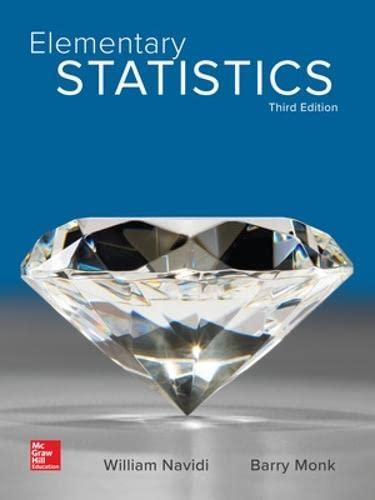Another study of the Salk vaccine, conducted at the same time as the trial described in Exercise
Question:
Another study of the Salk vaccine, conducted at the same time as the trial described in Exercise 29, used a different design. In this study, approximately 350,000 second graders were invited to participate. About 225,000 did so, and the other 125,000 refused. All of the participating second graders received the vaccine. The control group consisted of approximately 725,000 first and third graders. They were not given any placebo, so no consent was necessary.
a. Was this a randomized experiment?
b. Was it double-blind?
c. The treatment group consisted of children who had consent to participate. The control group consisted of all first and third graders. It turned out that the results of this study seriously underestimated the effectiveness of the vaccine.
Use the information provided in Exercise 29 (c) to explain why.
Exercise 29 (c)
In 1954, the first vaccine against polio, known as the Salk vaccine, was tested in a large randomized double-blind study. Approximately 750,000 children were asked to enroll in the study. Of these, approximately 350,000 did not participate, because their parents refused permission. The children who did participate were randomly divided into two groups of about 200,000 each. One group, the treatment group, got the vaccine, while the other group, the control group, got a placebo. The rate of polio in the treatment group was less than half of that in the control group.
c. Perhaps surprisingly, polio was more common among upper-income and middle-income children than among lower-income children. The reason is that lower-income children tended to live in less hygienic surroundings.
They would contract mild cases of polio in infancy while still protected by their mother’s antibodies, and thereby develop a resistance to the disease. The children who did not participate in the study were more likely to come from lower-income families. The rate of polio in this group was substantially lower than the rate in the placebo group.
Does this prove that the placebo caused polio, or could this be due to confounding? Explain.
Step by Step Answer:






